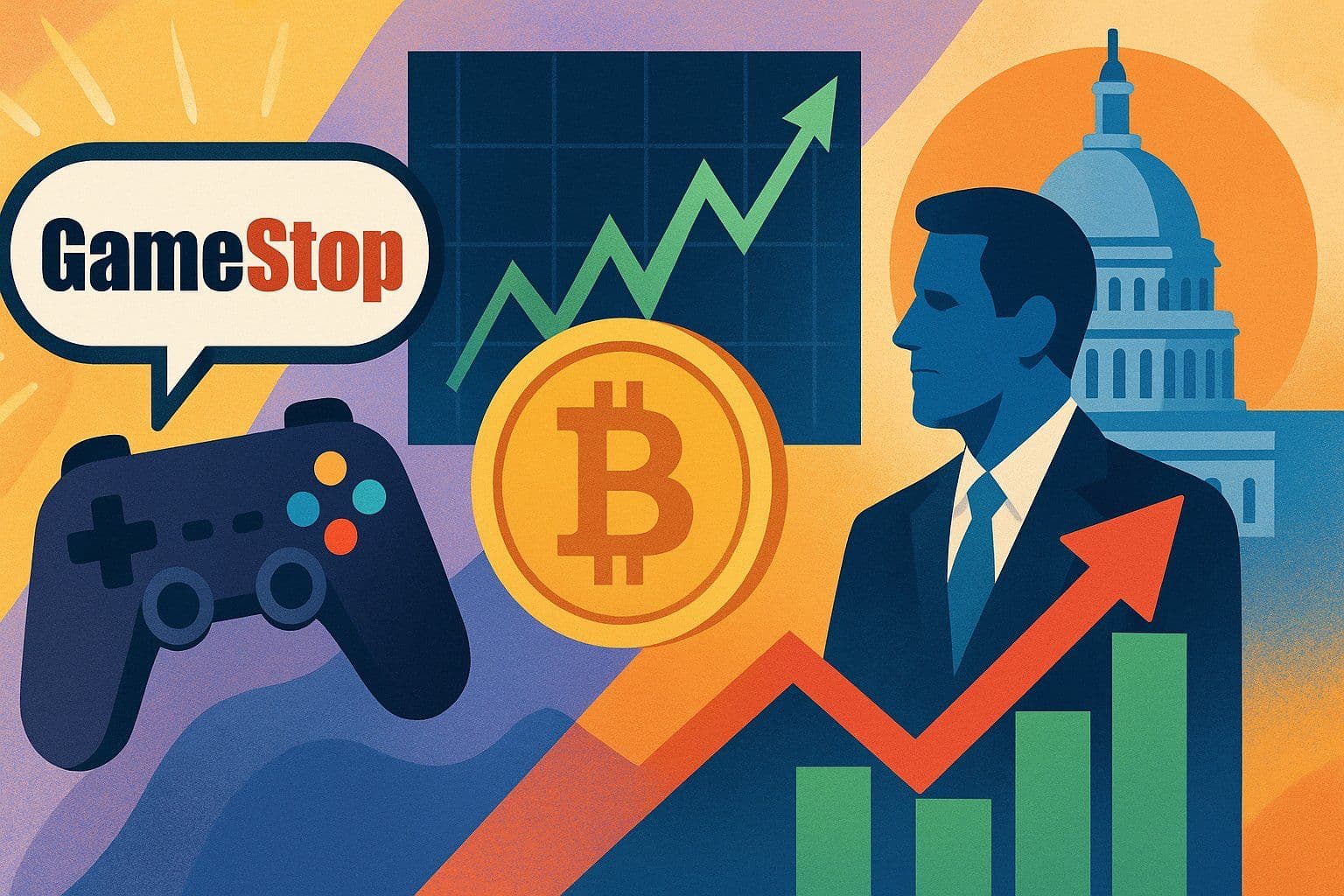A tongue-in-cheek social media post from GameStop declaring an end to the "console wars" ignited a market firestorm this week, demonstrating the raw power of memes when amplified by unexpected sources. The post, which was picked up and reposted by an official White House-affiliated account on X, didn't just go viral, it sent shockwaves from social media feeds directly to the stock market, triggering a rally in both GameStop shares and several crypto-adjacent equities. The event provides a case study in how meme velocity, political amplification, and crypto-narratives are merging, creating a new and volatile force in modern markets.
The Meme Spark
The sequence of events began with a declaration from GameStop on X. Citing Microsoft's decision to release a remake of its iconic Halo: Combat Evolved game on Sony's PlayStation 5, the retailer playfully announced the "official cessation of the console wars."
What started as a simple piece of brand marketing quickly escalated. An official White House "Rapid Response" X account reposted the statement, framing it as another "war" ended under the current administration. This was followed by the main White House account sharing an AI-generated image of the President in Halo's Master Chief armor, according to reports from Forbes. The chain of posts and replies quickly accumulated staggering engagement, reaching between 16 to 20 million views across the various threads.
From X to the Tape
The digital chaos did not stay contained online. GameStop (GME) shares jumped on the session, climbing approximately 7.7%, as reported by Yahoo Finance, citing Investing.com. The surge was a direct reflection of the immense attention the company was receiving.
More notably, the rally spilled over into a niche but growing corner of the market: publicly traded companies with significant Bitcoin treasuries. Strive (ASST), a firm known for its strategy of holding Bitcoin on its balance sheet, saw its stock catch a significant bid.
The move was underscored by a timely 8-K filing. As noted by CoinDesk, Strive disclosed the purchase of approximately 72.3 BTC for around $8.26 million, funded by warrant exercises. The average price paid was roughly $114,304 per coin. This transaction brought Strive's total holdings to approximately 5,958 BTC. The combination of the meme-driven market excitement and the firm’s crypto acquisition created a perfect storm for traders looking for high-beta plays on the digital asset ecosystem.
Why Crypto Reacted
The connection between a gaming meme and a Bitcoin treasury company might seem tenuous, but it aligns perfectly with the market's current structure. In a 24-hour period where crypto-related topics generated nearly 893,000 mentions across social platforms, any narrative with sufficient velocity can influence asset prices.
For traders, small-cap crypto-treasury stocks like Strive act as a leveraged bet on both Bitcoin's price and the overall sentiment in the digital asset space. When a culturally resonant event like the GameStop meme captures massive public attention, it creates a "social beta" effect. Capital flows toward assets perceived as being at the center of the conversation. The market's reaction suggests that traders are increasingly bundling meme stocks and crypto-proxy stocks into the same high-risk, high-reward category, driven by attention rather than fundamental analysis.
The Social Flywheel
The "Console Wars" meme is a prime example of the cross-platform amplification loop that defines modern virality. While the initial spark occurred on X, the content was quickly repurposed and spread across other platforms.
Short-form video platforms like TikTok and YouTube Shorts are critical to this process. Viral content is often clipped, remixed, and re-shared by commentary and entertainment accounts that reach entirely different demographics. To illustrate the scale, consider how unrelated viral content performs. A clip from a niche sport like Power Slap, from an account like @powerslap, can easily log over 24 million views. When a meme involves globally recognized brands like GameStop and a political entity like the White House, its potential reach is magnified exponentially, creating a powerful and self-sustaining attention flywheel. This constant bombardment of content solidifies the meme's cultural importance and, in turn, its perceived market relevance.
What This Signals for Markets
This incident highlights the emergence of a new asset class: the meme-stock-crypto hybrid. These are assets whose value is deeply intertwined with their ability to capture and hold cultural relevance. Their performance is less about earnings reports and more about narrative dominance.
However, this new paradigm carries significant risks. The data from social media is noisy, and correlation does not equal causation. The excitement can create liquidity traps, where prices gap up on low volume, only to collapse just as quickly. Furthermore, the spectacle of a government entity memeing with a publicly traded company could invite regulatory scrutiny or media backlash, introducing another layer of unpredictable risk.
The key takeaway is that the microstructure of modern markets is changing. Brands, and now even governments, are learning to "meme" their way into the public consciousness. As they do, they are inadvertently influencing capital flows and creating opportunities for those who can read the digital tea leaves. For today's investor, understanding meme velocity may soon be as important as understanding discounted cash flow.


Comments